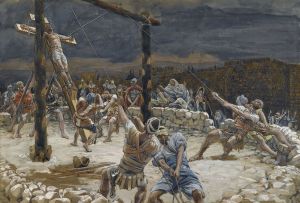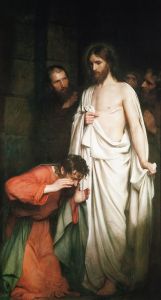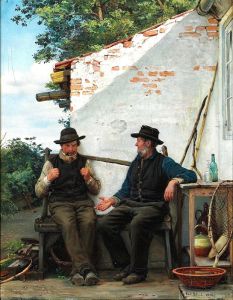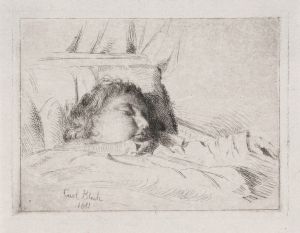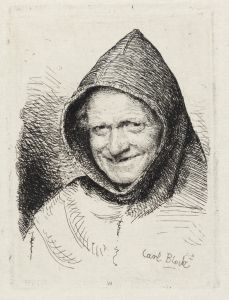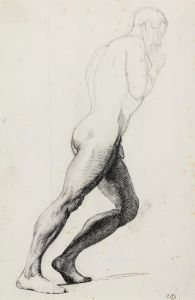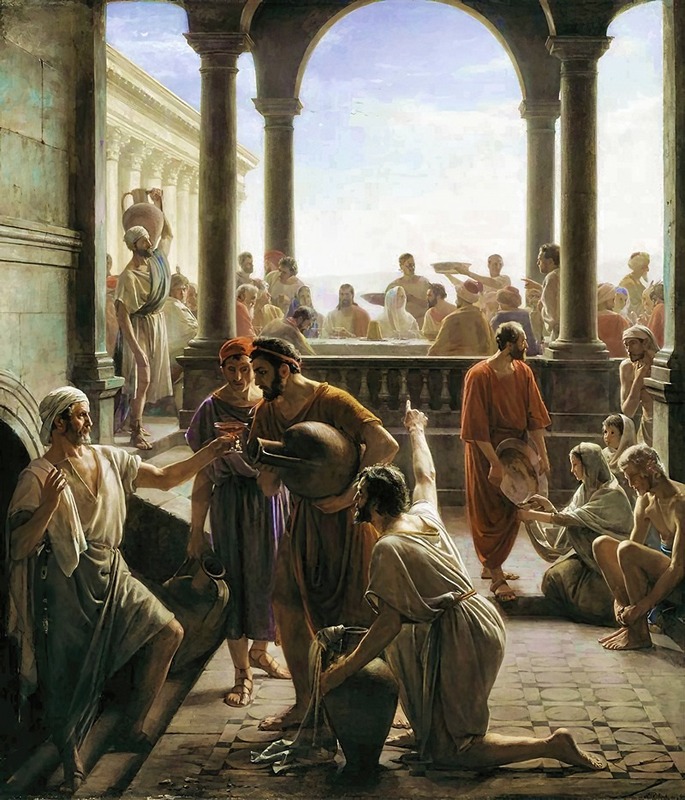
Turning Water to Wine
A hand-painted replica of Carl Bloch’s masterpiece Turning Water to Wine, meticulously crafted by professional artists to capture the true essence of the original. Each piece is created with museum-quality canvas and rare mineral pigments, carefully painted by experienced artists with delicate brushstrokes and rich, layered colors to perfectly recreate the texture of the original artwork. Unlike machine-printed reproductions, this hand-painted version brings the painting to life, infused with the artist’s emotions and skill in every stroke. Whether for personal collection or home decoration, it instantly elevates the artistic atmosphere of any space.
Carl Bloch's painting Turning Water to Wine is a renowned work of art that depicts the biblical story of Jesus performing his first miracle at the wedding in Cana, as described in the Gospel of John (John 2:1-11). This miracle, where Jesus turns water into wine, is a significant moment in Christian theology, symbolizing divine power and the abundance of God's blessings.
Carl Heinrich Bloch (1834–1890) was a Danish painter known for his religious art, which gained widespread recognition during his lifetime and continues to be celebrated today. Bloch studied at the Royal Danish Academy of Fine Arts and was heavily influenced by the works of the Old Masters, particularly Rembrandt. His ability to convey emotion and narrative through his paintings made him one of the most prominent artists of his era.
Turning Water to Wine is part of a larger series of 23 paintings that Bloch created for the King's Oratory at Frederiksborg Castle in Denmark. These works were commissioned between 1865 and 1879 and depict various scenes from the life of Jesus Christ. The series was commissioned by Jacob Christian Jacobsen, the founder of the Carlsberg Brewery, as part of the restoration of the chapel following a fire in 1859. Bloch's paintings in the oratory are considered some of his most significant contributions to religious art.
In this particular painting, Bloch captures the moment of transformation with a sense of reverence and drama. The composition emphasizes the central figure of Jesus, who is surrounded by wedding guests and servants. The expressions and gestures of the figures convey a range of emotions, from astonishment to gratitude, reflecting the miraculous nature of the event. Bloch's use of light and shadow enhances the spiritual atmosphere of the scene, drawing the viewer's attention to the divine act taking place.
The painting, like much of Bloch's religious work, has been widely reproduced and continues to inspire viewers around the world. It is often used in Christian contexts to illustrate the story of the wedding at Cana and is appreciated for its artistic and theological depth. Bloch's ability to combine technical skill with profound storytelling has solidified his reputation as one of the foremost painters of religious themes in the 19th century.
Today, the original painting remains part of the collection at Frederiksborg Castle, where it can be viewed alongside the other works in the series. Bloch's legacy endures through his contributions to religious art, and Turning Water to Wine remains a testament to his mastery of the genre.






